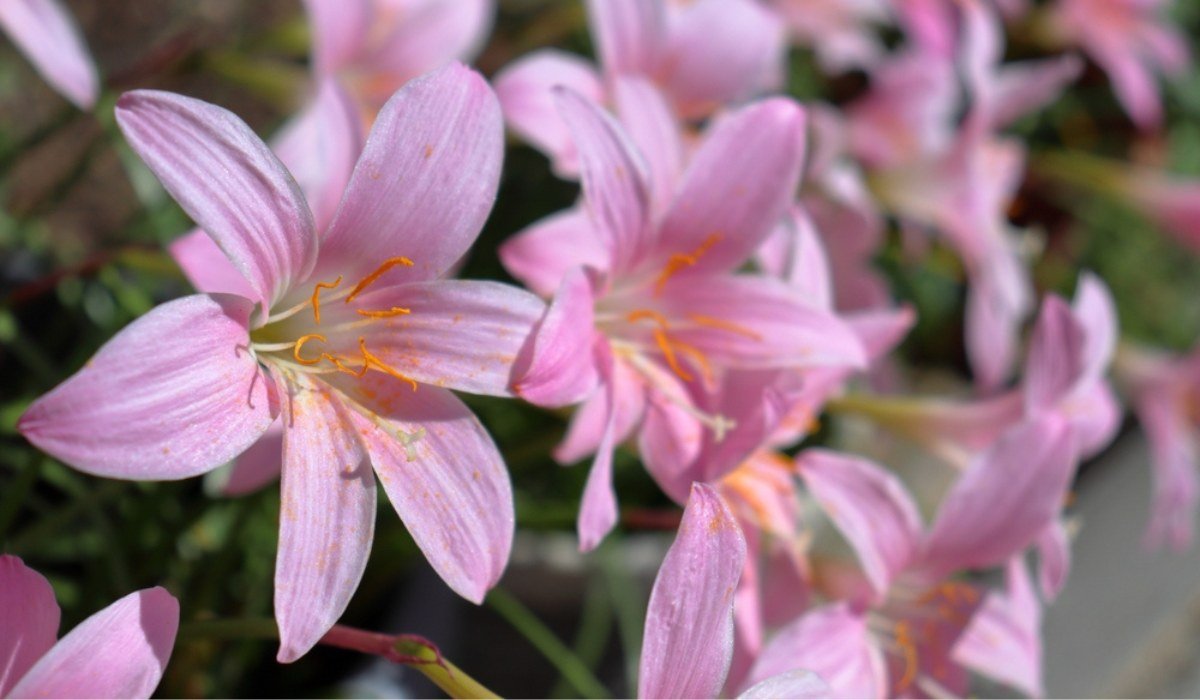Zephyranthes carinata, also known as the silver flower orchid, is an epiphytic or lithophytic plant belonging to the family of Amaryllidaceae.
The Zephyranthes carinata is a succulent plant used as an ornamental or houseplant. It produces beautiful, colourful flowers that are typically white and bell-shaped.
See also: all about Zephyranthes Minuta

Source: Pinterest
Also read: Ice plant: Should you plant these succulents in your home?
Zephyranthes carinata: Quick facts
| Botanical Name | Zephyranthes carinata |
| Common Name | Pink Rain Lily, Rosepink Zephyr Lily |
| Genus | Zephyranthes |
| Kingdom | Plantae |
| Order | Asparagales |
| Family | Amaryllidaceae |
| Life Cycle | Perennial |
| Mature Size | Around 3-8 ft. tall |
| Cultivation | Mexico, Colombia And Central America |
| Benefits | Medical Uses |
Zephyranthes carinata: Physical description

Source: Pinterest
Zephyranthes carinata is a perennial plant, which grows from the ground into a tall upright perennial with a single stem. It may reach heights of 3 feet in a warm climate but can grow as tall as 6-8 feet in cooler regions of the eastern United States.
Zephyranthes carinata is a plant native to the West Indies and Central America. This plant has delicate, bell-shaped flowers with purple blotches, white petals and yellow stamens (what looks like a little puffball with an eye inside). This fragrant plant was once used as a house plant but is now grown as an ornamental drought-tolerant landscape shrub.
Zephyranthes carinata: How to grow

Source: Pinterest
Zephyranthes carinata is a plant that can be easily grown indoors. It requires a minimum temperature of around 20°C and needs adequate lighting to get started. It does not like too much shade, so make sure you provide it with the right amount of light.
How to propagate Zephyranthes carinata from seed
Zephyranthes carinata is a wonderful plant that can be grown in groups and even indoors.
The most important thing when trying to propagate Zephyranthes carinata from seed is to choose the right location for your new plant. You need to remember that this plant can only be grown in full sun and partial shade conditions.
You should also make sure that you store the seeds properly so that they do not get lost when you are planting them. You will also need some soil as well so that you can plant the seeds there.
Once you have planted your seeds, it should take about one month for them to germinate. Once they have started growing, you should give them plenty of water every day until they are ready for transplanting into their final location
Zephyranthes carinata: Maintenance tips
- Water regularly during the summer months but avoid overwatering in winter as this will encourage fungal growth on foliage.
- Avoid allowing water to stand around stems and leaves during droughts, as this will encourage rot in stems and leaves.
- Pink rain lily plants do not require fertiliser. Their growth and flourishing are facilitated by the nutrients in the soil. In any case, organic fertilisers and compost can be fed to plants. It will not harm them.
Zephyranthes carinata: Uses

Source: Pinterest
- As a nutrient-dense herb, Zephyranthes carinata supports the health of the body against diabetes, ear and chest disorders, viral infections and breast cancers.
- In addition to its showy pink cupped flowers, pink rain lilies are pest and disease-resistant.
- As a groundcover, it can also be planted in rock gardens along paths.
- The plant grows well alongside echeverias and grasses like Blaufuchs Blue Fescue.
FAQs
What is the poisonous nature of Zephyranthes?
There is toxicity. In addition to the leaves and bulbs, the plant is toxic in many other parts as well.
Is full sun necessary for rain lilies?
It is wise to plant rain lilies in an area that receives full sun. Most plants tolerate a little afternoon shade or some dappled shade.
Can dogs be poisoned by rain lilies?
Yes. Several types of lilies are poisonous to dogs, including Prairie Lilies and Rain Lilies.
Housing News Desk is the news desk of leading online real estate portal, Housing.com. Housing News Desk focuses on a variety of topics such as real estate laws, taxes, current news, property trends, home loans, rentals, décor, green homes, home improvement, etc. The main objective of the news desk, is to cover the real estate sector from the perspective of providing information that is useful to the end-user.
Facebook: https://www.facebook.com/housing.com/
Twitter: https://twitter.com/Housing
Email: [email protected]











